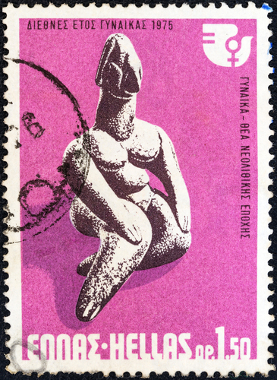latifundium corresponds to a extensive private agricultural property, generally not economically exploited, therefore unproductive. When exploited, they are intended for the cultivation of a single agricultural product (monoculture), with the purpose of supplying, commonly, the foreign market, due to the large-scale production.
One of the main characteristics of the latifundium is the concentration of properties in the hands of a few rural owners, families or companies. This land concentration is associated with several conflicts and struggles for land in Brazil.
Read too: Land concentration in Brazil
Etymology of the word latifundio
The origin of the word latifundio comes from the Latin: “latifund? a,? i". This word means: extensive rural property.
Latifundio and the Land Statute
It was through the Land Statute, created in 1964, that rural properties started to be categorized. Therefore, this statute was responsible for bringing in light of legality questions regarding the use and occupation of land in Brazil.
Concepts such as rural module, rural property, family properties, smallholdings and large estates became part of Brazilian legislation, thus characterizing the land structure of the country.
Latifundio is defined in Art. 4 of LAW No. 4,504 of 1964 as:
|
V - "Latifundio", the rural property that: a) exceeds the maximum dimension established in the form of article 46, § 1, subparagraph b (of the maximum allowed limits of areas of rural properties, which will not exceed six hundred times the average module of the rural property not at six hundred times the average area of rural properties, in the respective zone;), of this Law, bearing in mind the ecological conditions, regional agricultural systems and the purpose for which it is intended; b) not exceeding the limit referred to in the previous paragraph, and having an area equal to or greater than the dimension of the rural property module, is kept unexplored in relation to the physical, economic and social possibilities of the environment, for speculative purposes, that is, deficient or inadequately explored, in order to prohibit its inclusion in the concept of rural enterprise; |
know more: Land Law 1850
The Land Statute also contains the definitions of:
Large estate by dimension: fixed in the letter a of item V of Art. 4 of the same Law above, corresponding to rural property that exceeds the maximum size of 600 times the average module of the rural property or 600 times the average area of rural properties, considering the ecological conditions, regional agricultural systems and the purpose for which intended.
Large estate by exploitation: corresponds to property with an area equal to or greater than the fiscal module that is unexplored or poorly explored due to the misuse of the land. This type of latifundium is characterized by unproductiveness, generally having as its objective speculation real estate (keep the land unexplored in order for its market value to increase over the time).
Read too:Real estate speculation in cities
Yet, the term latifundium fell into disuse in Brazilian legislation. From the Federal Constitution of 1988, the term was removed from the legislation, which started to classify rural properties into small and medium-sized properties. Thus, the Constitution did not present concepts for the classification of rural properties, thus starting to make a relationship between property and its social function.
But do you know what the social function of land is?
According to the Federal Constitution of 1988, social function is defined in Art. 186 as:
THE social role is fulfilled when the rural property simultaneously meets the following requirements, according to criteria and degrees of demand established by law:
I - rational and adequate use;
II - proper use of available natural resources and preservation of the environment;
III - compliance with the provisions that regulate labor relations;
IV - exploitation that favors the well-being of owners and workers.
The use of land must be directly related to the public interest, being, therefore, understood as the fulfillment of positive duties aiming both individual interests and interests collectives. Therefore, unproductive land does not exercise its social function.
Latifundio x Minifundio

Minifúndio are small rural properties intended for the subsistence of a family.
Unlike the latifundium, minifundio is usually characterized by being a rural property with small dimensions. Usually, they belong to a family that through the agriculture and livestock of subsistence take from her her livelihood. It is generally practiced to polyculture with the purpose of supplying the basic needs of the producers, as well as supplying the internal market.
The Land Statute defines minifundio as:
IV – "Minifundio": rural property with an area and possibility lower than those of the family property. |
The minifundio, therefore, is the rural property that has a small extension, not allowing the maintenance of a family property, being inefficient for the socioeconomic development of the owner.
productive latifundium
It is considered productive latifundium the rural property that fulfills its social function, exploited efficiently, aiming at the collective well-being, according to what is foreseen by law.

Unproductive latifundium is one that remains unexplored, thus not fulfilling its social function.
unproductive latifundium
It is considered unproductive latifundium the rural property that does not fulfill its social function, being, therefore, exploited inefficiently or even not being exploited, aiming only at speculation.
by Rafaela Sousa
Graduated in Geography
Source: Brazil School - https://brasilescola.uol.com.br/o-que-e/geografia/o-que-e-latifundio.htm



